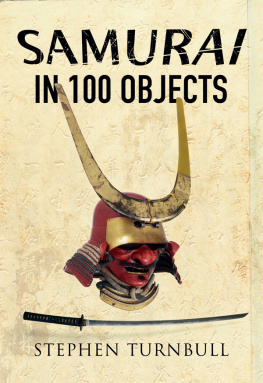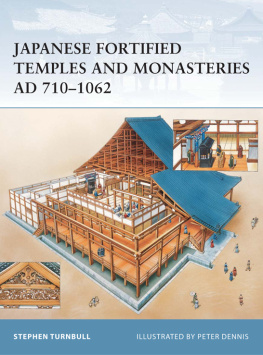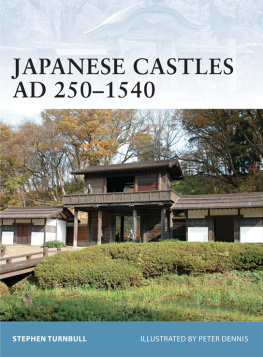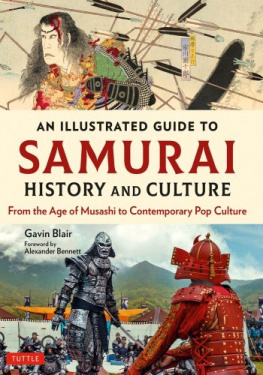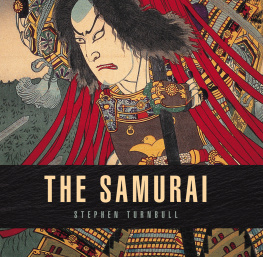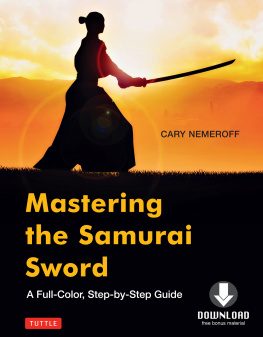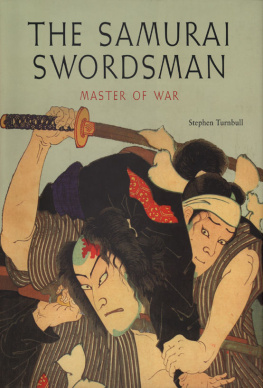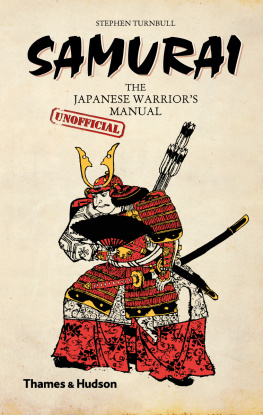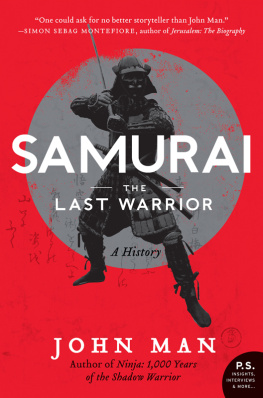For my darling wife Marlene Sandra Turnbull, on the happy occasion of our marriage on 17 September 2016.

FRONTLINE BOOKS
SAMURAI IN 100 OBJECTS
This edition published in 2016 by Frontline Books,
an imprint of Pen & Sword Books Ltd,
47 Church Street, Barnsley, S. Yorkshire, S70 2AS
Copyright Stephen Turnbull
The right of Stephen Turnbull to be identified as the author of this work has been asserted by him in accordance with the Copyright, Designs and Patents Act 1988.
ISBN: 978-1-47385-038-5
eISBN: 978-1-47385-039-2
Mobi ISBN: 978-1-47385-040-8
All rights reserved. No part of this publication may be reproduced, stored in or introduced into a retrieval system, or transmitted, in any form, or by any means (electronic, mechanical, photocopying, recording or otherwise) without the prior written permission of the publisher. Any person who does any unauthorized act in relation to this publication may be liable to criminal prosecution and civil claims for damages.
CIP data records for this title are available from the British Library
For more information on our books, please visit
www.frontline-books.com
email
or write to us at the above address.
Introduction
This book is a celebration of the samurai of Japan, the members of one the greatest military societies in world history. It tells their story through 100 examples of the material culture they left behind, objects which illustrate better than any written records that the samurai were both cruel and cultured, selfish and self-sacrificing, active and artistic.
Samurai warriors carried weapons that were often works of art in their own right and wielded them in a way that was far from beautiful. Their solid iron helmets were designed to absorb the impact of musket balls yet sported fantastic crests of feathers and golden horns. Massive armies ruthlessly burned down palatial enemy castles while comparing themselves artistically to the fragile falling cherry blossom. The samurai repelled foreign invasions and attempted a few of their own, creating along the way a romantic image that the modern age has done nothing to diminish and much to enhance.
Samurai culture, as exemplified by the carefully selected objects gathered here from Japanese locations and from museums around the world, provides a visual expression of samurai tradition, the corpus of their knowledge, beliefs, acceptable behaviour and historical precedents. The formation of the samurai tradition took many centuries because with every major shift in Japanese history the samurai re-invented themselves.
Between the eighth and ninth centuries the word samurai, which originally signified little more than a servant, rapidly came to mean someone who provided service of a specifically military nature. The imperial court of the time, realising the failure of an idealistic programme that had regarded all its subjects as soldiers and conscripted the unwilling to fight inefficiently, seized on the opportunity to commission and reward those who would fight both willingly and well. There was an obvious danger in such an arrangement, as was hinted at in 866 when two district magistrates fought a battle over a border dispute. It was a minor incident, but its significance lies in the fact that neither side had any hesitation about using the official government military forces at their disposal for settling a personal quarrel. The distinction between being commissioned to make war on the emperors behalf with the forces under ones command and maintaining a private samurai army was becoming dangerously blurred. What is remarkable is how long it took from such a realisation to the time when a serious armed conflict broke out between rival samurai factions at the highest level of state. That development happened with the Gempei War of 1180-85 and resulted in a government of the samurai, by the samurai and for the samurai, with the divine emperor reduced to a figurehead and the real decisions being made by the Shogun, the military dictator whom the powerless emperor had supposedly commissioned to rule Japan on his behalf.

That theoretically temporary commission was not to be handed back to an emperor until 1868. In the meantime the ruling samurai had been the fighting samurai, and those two elements of war and rule went towards creating the artistic, aesthetic, religious, moral and militaristic samurai tradition illustrated here. It was forged during a series of civil wars and culminated in 1600 with the triumph of the Tokugawa family. The Tokugawa Shogunate ushered in a time of peace maintained by force under their iron grip, and just as the samurai who had been killed in battle were enshrined and placated in order to avoid them turning into vengeful spirits, so the whole samurai tradition underwent a profound transformation once there were no battles left to fight.
Samurai culture was harnessed to serve the interests of the ruling class as the samurai became bureaucrats with swords, and then in 1868 the whole concept of the samurai tradition changed yet again. The position of Shogun was abolished and Japan prepared to face the future as a modern nation with one foot stuck firmly in its militaristic past. For the new Meiji government the ideal of a samurai was reinvented and harnessed to inspire Japanese conscript soldiers to die in the name of the emperor. The aristocratic notion of a samurai was quietly dropped. All men were now capable of harnessing the samurai spirit, regardless of their social background.
The subsequent experience of the Second World War produced a further twist, making Japan think again and rejecting any link between its historic military past and its uncertain and tainted recent military present. Instead the samurai were flung back safely into Japans history to have their stories rewritten, their castles rebuilt and their reputations restored, and in the dusty corners of museums and storerooms the objects shown here were rediscovered. Scraped clean of grime in both a physical and a moral sense, the weapons, armour, scrolls and towers of the samurai tradition could once again tell their true story.
1
The Eastern Gate of Fort Akita
The snow is falling steadily around the bleak Eastern Gate of Fort Akita, an isolated outpost of the imperial Japanese government built in 733 in Thoku, the extreme northern part of the main island of Honsh. The forts walls are made from rammed earth above a shallow foundation of undressed stone. Sandy soil, dug from a depth sufficient to guarantee that no seeds would be present, was mixed with water and carried up ladders to be applied in a series of layers that were firmly rammed down. The final stage was to give the wall a coating of plaster and add a tiled roof to weatherproof it.

